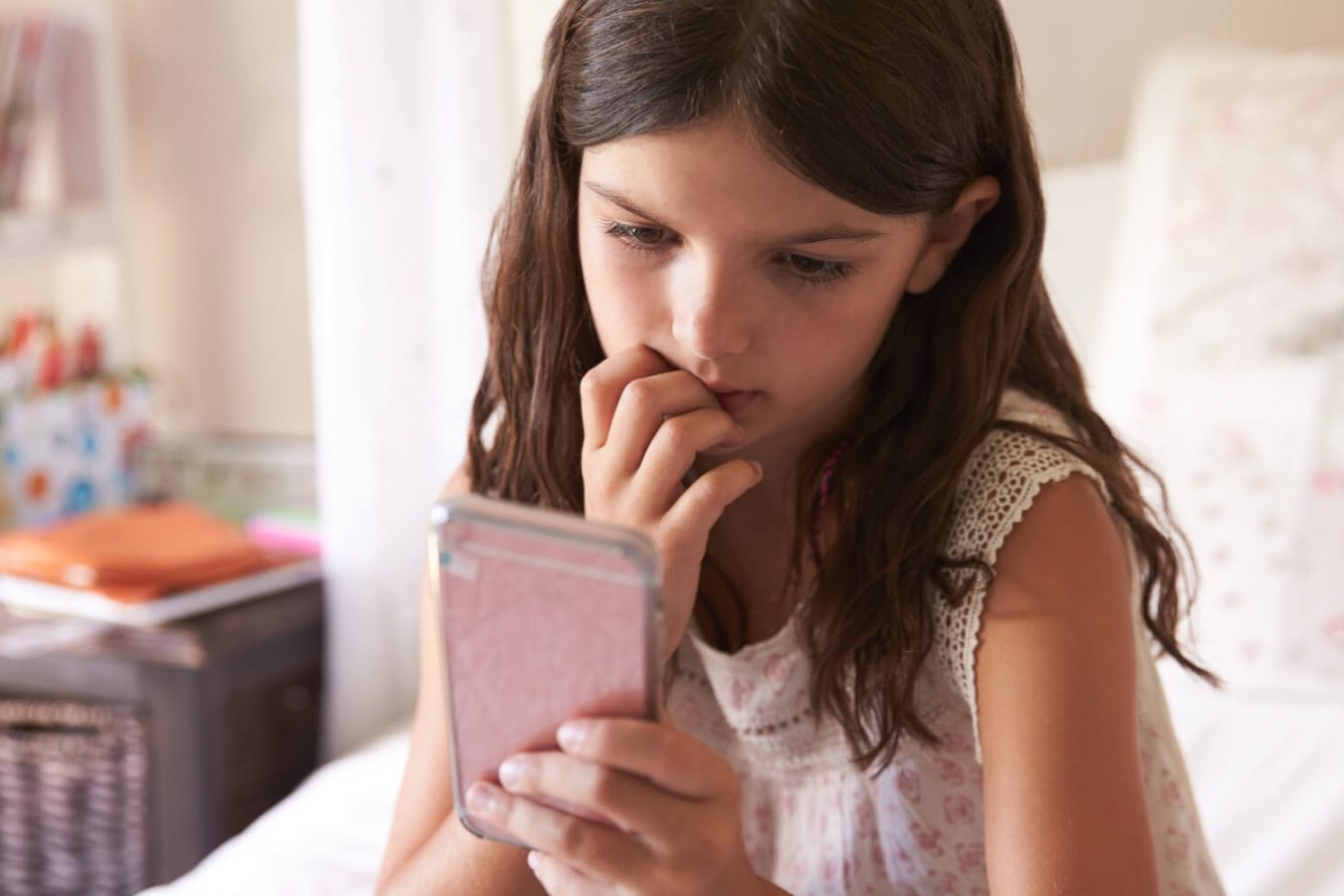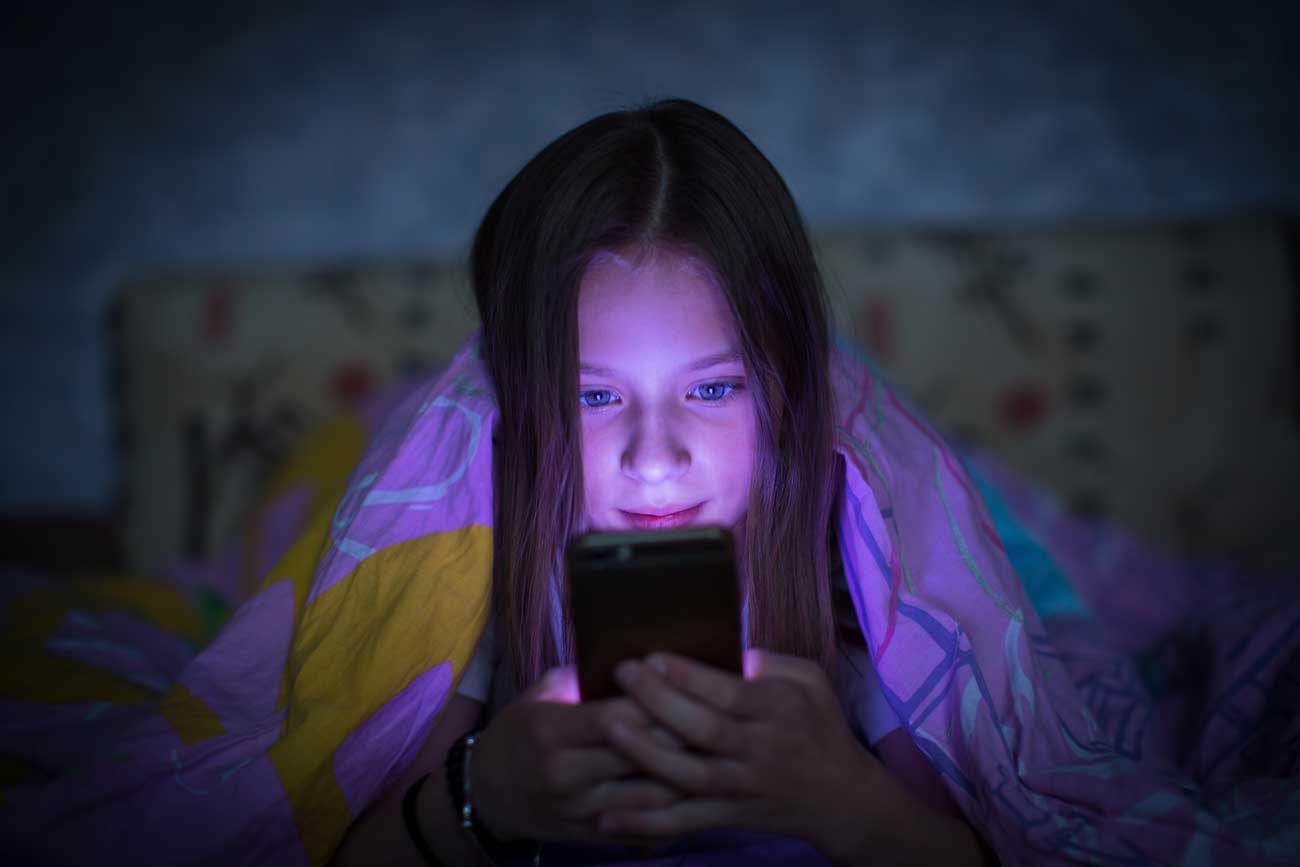
eSafety Commissioner Julie Inman-Grant discusses the practice of 'sexting' among young people, and what parents can do to protect their child.
Few people know that the term ‘sexting’ was first used by the Australian media a decade ago when sending sexy photos were primarily delivered via text message. Sexting has now come to encompass a broader range of delivery mechanisms and may now include video or even live broadcasting.
The other important thing to know is that the young people who tend to engage in this practice don’t generally refer to the taking and sending of racy pictures as ‘sexting’. This is reserved for us, perhaps more prudish, adults who can’t conceive of taking a naked picture (even with good lighting and filters). In fact, young people are more likely to refer to these digitally-shared naked photos as ‘nudes’, ‘rudie nudies,’ ‘dodgy pics’ and much worse (male or female anatomy + rhymes with ‘pics’). Get it?
The truth is most parents don’t get it. But we need to understand what is driving this practice amongst our children, the potential risks it might pose for them and how to help them manage these risks. Research tells us that sexting is more common than we as parents might like to think and, sadly, the practice is starting to emerge as early as primary school.
There’s certainly nothing new about young people exploring their sexuality or succumbing to peer pressure. Back in my day, it was ‘Spin the Bottle’ or ‘Truth or Dare!’ Today, teenagers are very vulnerable to the pressure to, ‘show me you love me by sending a pic’ or ‘loosen up and have a bit of fun because everybody does it!’
Sexting represents the perfect storm of the adolescent pushing of boundaries colliding with the exploration of their sexuality. To teens, sexting feels flirty, fun, chaste and rational. What seems irrational to teens is the panic this instills in their parents and the fall out that can ensue when sexting goes wrong. Not only can this have significant emotional and psychological impacts on young people but there can be long-term reputational and legal implications as well.
Is it Possible to Engage in ‘Safe Sexting’?
In my line of work, we can never promise absolute safety but it is important to know that sexting doesn’t ALWAYS end badly. The findings of a recent study tell us that a lot of sexting amongst young people happens within existing relationships, between a small number of sexting partners, and thankfully, without problems.
But, common logic dictates that those who sext are more likely to become susceptible to image-based abuse. This supposition is borne out in a recent RMIT study that found one in five Australians have fallen prey to some form of image-based abuse and that those who have sent sexts are 37 per cent more likely to become victims.
We know that once an image is shared it’s out of yours and their control – it can be copied, saved and posted on social media and public websites for friends, family and total strangers to see. When this happens, it can be really difficult, and sometimes impossible, to remove, and the impacts can be devastating. The eSafety Office is working on a reporting tool and resource portal to help Australian victims of image-based abuse, but we also want to help prevent and protect young people before the damage occurs.
As a parent of three kids, I know this sounds daunting, especially when we know a singular youthful indiscretion could result in a lifetime of hurt. We need to remember that the part of the brain that involves judgment and impulse control is still developing in young people. Even though they may logically understand the consequences of sexting, young people often make decisions without truly considering or understanding how their actions can affect their lives and the lives of others.
What can I do to Protect my Child?
As parents, we play an important role in guiding our children every day about things that might be unsafe – the online world is no different! We need to talk to our kids early on about what can go wrong if they choose to share intimate pics, and help them manage risk and make the right choices.
It might seem awkward to begin with, but there’s lots you can talk about. Use real life sexting stories in the media or their community to get started. Talk about the risks, your expectations, respecting their bodies and personal boundaries, trust and respectful relationships and strategies to employ when things go wrong.
If things do go awry, it’s important to remain non-judgmental and calm but to also act swiftly to control the spread of images. Work with your child to get as many details as you can about the nature of the photo and the extent to which it has been shared. It may mean getting help from the school if other students are involved. You can make a report to the eSafety Office through our cyberbullying complaints form or through our image-based abuse tool, once it goes live later in the year.
Our newly updated ‘sexting’ advice provides tips and resources on how to start the conversation, as well as detailed guides on what to do if you find that your child has been involved in a sexting situation that’s gone pear shaped.
Above all, reassure them that they are not alone. You will work through this together!
We thank the Office of the eSafety Commissioner for allowing us to share this blog, which first appeared on the Office’s website. You can read the original here.
The office has recently launched Young & eSafe, a new online youth engagement platform, designed to educate and empower young people to take control of their online experiences.
Like this post? Please share using the buttons located on this page.
Subscribe to The Parents Website

